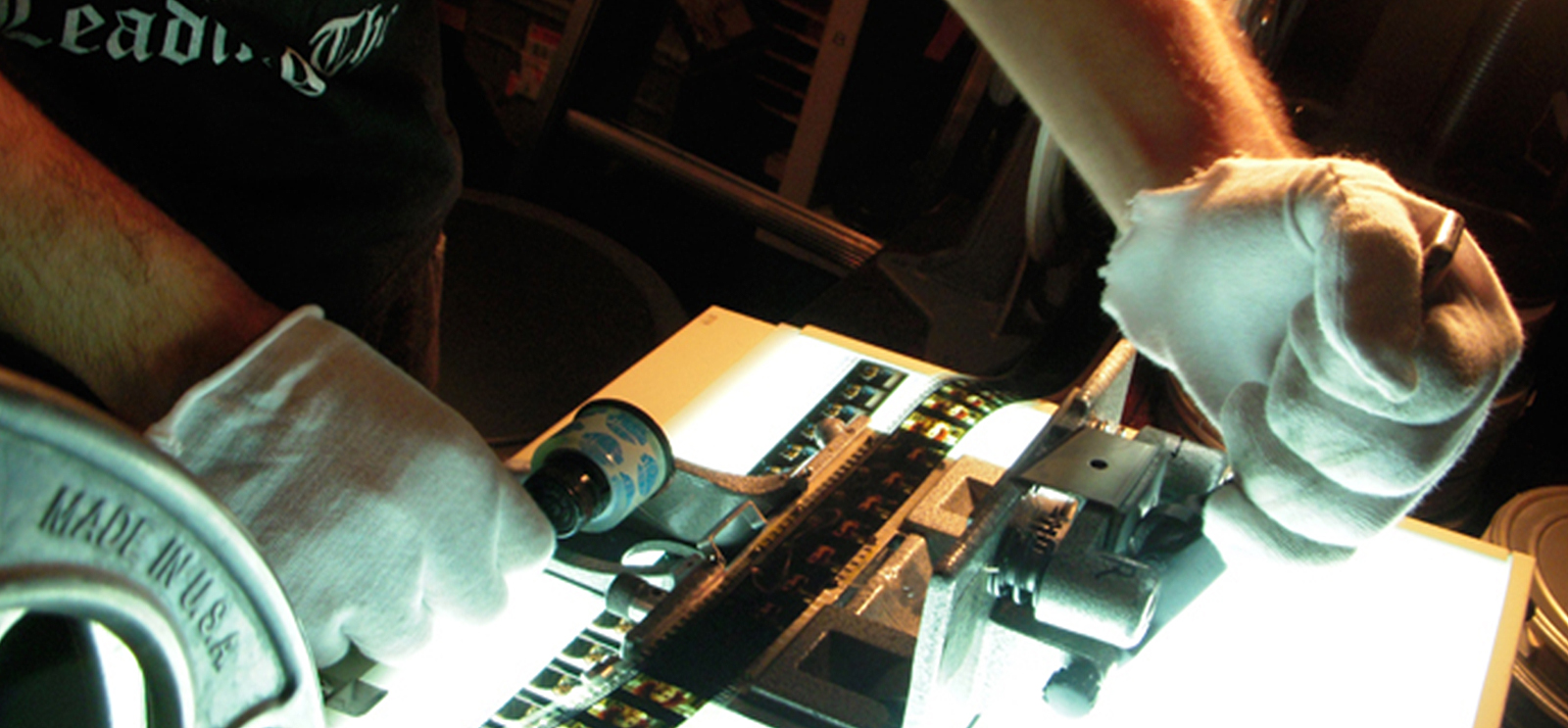
As movies go digital and original prints become rare, the Doc Films tradition of analog projection with student volunteers could be in jeopardy. (Photo by Mitchell Kohles, AB’12)
Volunteer projectionists at Doc Films try to keep an old technology from flickering out.
I remember watching Fight Club as a 16-year-old and thinking I understood how movies made it onto the big screen. But it wasn't until volunteering at Doc Films as a College first-year that I learned projection involves more than watching the corner of the screen for "cigarette burns."
After three years in the booth, you develop a checklist for prepping a film print: transferring the film onto show reels, rewinding the film, checking and repairing splices, and adding your own if necessary, noting the scenes where dots (those cigarette burns) appear to mark the end of the reel, determining the print's proper sound format and aspect ratio. In Fight Club, Brad Pitt's character makes prep work more exciting by splicing in single frames of pornography.
For 35 mm film—the most common size today—Doc uses a changeover system with two projectors, called Evelyn and Wanda for their east/west positions. When the show starts, the film runs through Evelyn until the reel is almost empty—about 20 minutes. Eight seconds before the reel's end, the dots appear in the screen's upper right-hand corner for an eighth of a second—four frames—and I turn on Wanda's motor and raise the douser to let the light flood into the chamber. In the print's final second, as the second reel is running through Wanda, a second dot appears, and I step on the changeover pedal to project Wanda's image instead of Evelyn's, which is now just black filler, the reel's tail. If everything goes well, the audience doesn't notice.
Of course, Doc regulars know that screenings don't always run so smoothly. Projectionists have nightmares about the bubbling, deep-colored metastasis on screen that signals a burning print inside the projector—the xenon lamp will torch a frame left stationary for even half a second. Fortunately, few of our mistakes have such inflammatory results. If a film breaks below the sound chamber, the outgoing film spills onto the floor in huge ribbons while the projector continues to show the movie on screen. To recover, a projectionist must find the broken end, reattach it to a new take-up reel, replace the original reel with the new one, guide the spilled film back onto this new reel, and allow the stronger tension of the take-up motor to catch up to the film still running through the projector. Unless the print is particularly rare or fragile, we can fix the spill without stopping the show or alerting the audience.
A projectionist's skills are hard to come by these days. In the 1970s theaters adopted a less labor-intensive reel system that used platters to bypass the changeover process. Most multiplexes now use platters: all the film is wound onto one giant reel and fed through the cinema so that the same print runs through several projectors and appears on multiple screens. A multiplex can handle 12 or more screenings a night with one projectionist.
At Doc the process is less efficient, but it's easier on the film. Using the changeover system, we can screen archival films that require careful handling. Kyle Westphal, AB'07, former Doc programming chair and head projectionist at the George Eastman House in Rochester, New York, explained the benefits in a San Francisco Film Festival interview: "It forces the projectionist to actually be there during the screening and maintain the integrity of the print by not cutting and resplicing it at the heads and tails of every reel."
Yet as distribution goes digital and film repositories become more selective about lending, Doc's commitment to showing original prints on analog equipment has become increasingly difficult and expensive. In May 2010 Doc volunteers and board members gathered to discuss how to address the changes. Some proposed establishing an office-manager position to maintain relations with distributors and handle Doc's finances. Others proposed hiring full-time projectionists, cutting the volunteer staff nearly in half.
Becca Hall, AB'10, a former Doc volunteer and cofounder of the Northwest Chicago Film Society, attended the meeting: "Basically, Doc presently operates as if it's still the 16 mm era," she says, "when films were available to anyone and striking new prints was easy—and when the equipment used was simple enough for a schoolteacher to use and maintain. All this puts the possibility of Doc continuing to exist as we've known it in serious jeopardy."
It will be up to future volunteers to decide the fate of film on campus. As part of the University community for more than 75 years, Doc claims the title of longest continually running student film society in the country. As I watch a new group of volunteers thread the 35 mm film into the projector, I hope we don't give that up.
